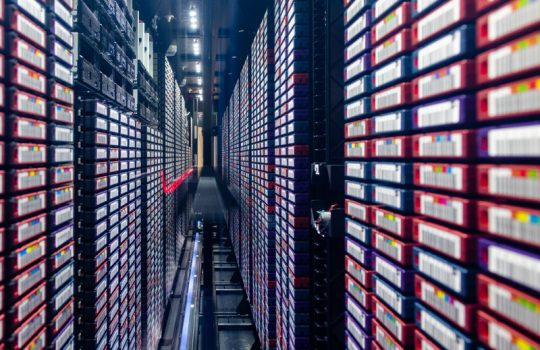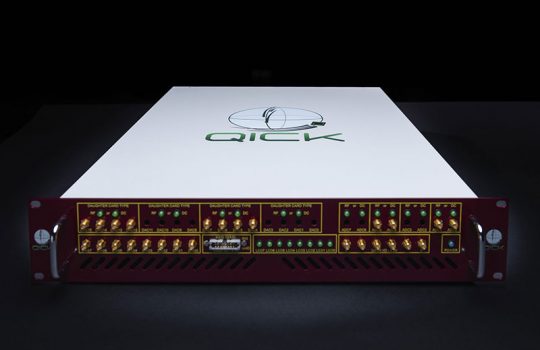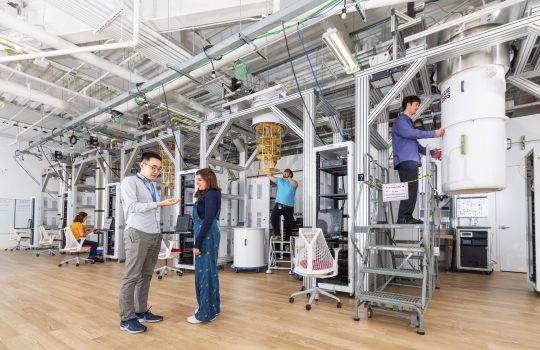The U.S. Department of Energy’s Fermi National Accelerator Laboratory is in the midst of many scientific enhancements and discoveries. On May 1, DOE Under Secretary for Science and Innovation Geraldine Richmond and Principal Deputy Under Secretary Ali Douraghy visited and toured Fermilab to view firsthand the progress being made. As part of their inaugural visit to the Batavia, Illinois, lab, they joined lab leaders and researchers who lead many international projects in various stages of development, research and discovery.
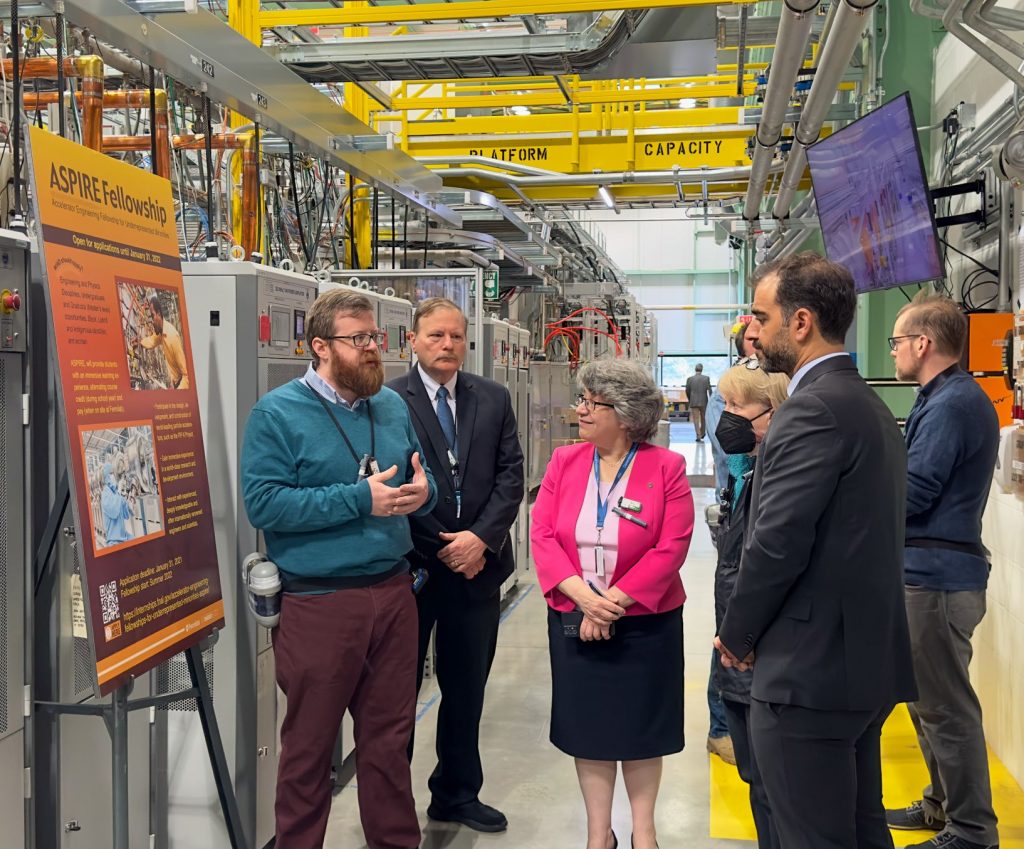
Deputy Under Secretary Douraghy (right) and Under Secretary Richmond learn more about the Accelerator Science Program to Increase Representation in Engineering fellowship program from PIP-II scientist Jeremiah Holzbauer with Fermilab Director Lia Merminga (center) and Rich Stanek, interim PIP-II project director. Photo: Caitlyn Buongiorno, Fermilab
“I am honored to be at Fermilab today to see great science in progress and the dedicated scientists, engineers and researchers who make these projects happen,” said Richmond, who oversees DOE’s role as the nation’s largest federal sponsor of basic research in the physical sciences. “Fermilab is a rich environment full of talented individuals who drive innovation in high-energy physics,” she added.
Their tour began at Fermilab’s particle accelerator complex, which has enabled groundbreaking discoveries for more than 50 years. The complex is being modernized with construction of the Proton Improvement Plan, or PIP-II. An essential enhancement to the lab’s particle accelerator complex, PIP-II is a leading-edge 215-meter superconducting linear accelerator that will eventually power the high-energy neutrino beam for the international Deep Underground Neutrino Experiment, hosted by Fermilab. The upgrade will also enable a broad physics research program with particle beams for decades to come that could lead to fundamental discoveries in particle physics.
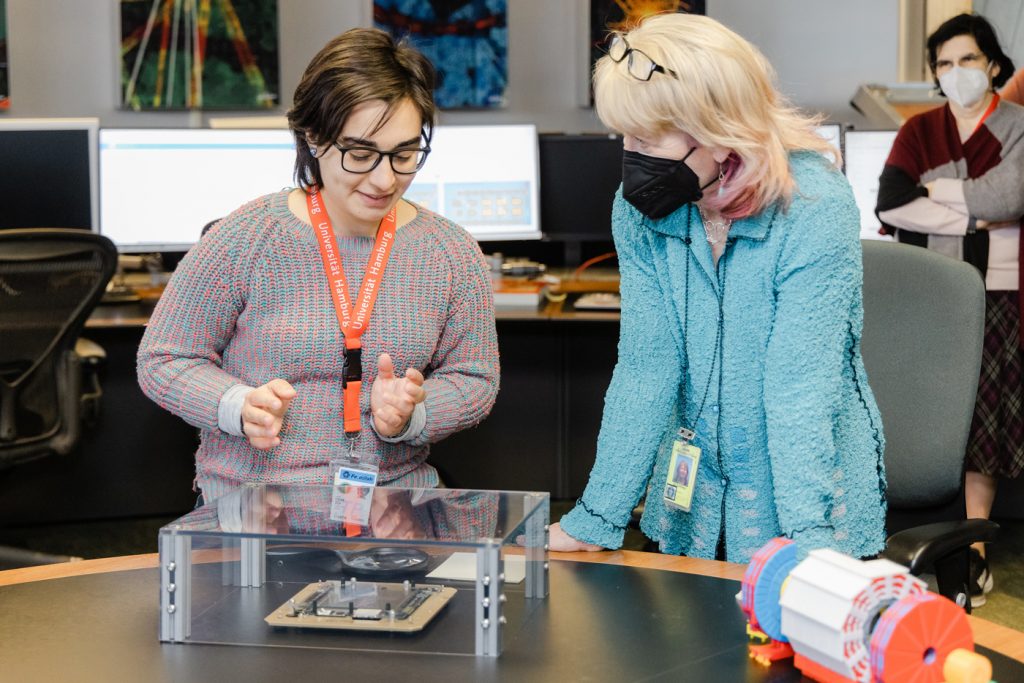
Irene Zoi, a postdoctoral researcher at Fermilab, talks with Richmond in the Remote Operations Center about the CMS experiment and the LPC program. Photo: Tom Nicol, Fermilab
Richmond and Douraghy also visited Fermilab’s Superconducting Quantum Materials and Systems Center, one of the five DOE National Quantum Information Science Research Centers. SQMS is a collaboration of 28 partner institutions — national labs, academia and industry — that work together to bring transformational advances in the field of quantum information science.
Last month, Fermilab opened the Integrated Engineering Research Center, a brand-new, 80,000-square-foot, state-of-the-art lab space for engineers and technicians working on high-energy physics projects, like DUNE. DUNE is an experiment on which more than 1,300 scientists and engineers from around the world collaborate to unlock the mysteries of neutrinos.
“Fermilab is a rich environment full of talented individuals who drive innovation in high-energy physics.” – DOE Under Secretary for Science and Innovation Geraldine Richmond
“Projects like DUNE that are currently under construction in Illinois and South Dakota will catapult new discoveries that will maintain the U.S. as a leader in science research,” said Douraghy.
The Under Secretary for Science and Innovation has oversight responsibilities for a $15 billion portfolio of activities across DOE’s Office of Science, applied energy programs and 13 national laboratories, the premier engines of scientific discovery and clean energy innovation. This visit to Fermilab emphasizes the key role it plays in the nation’s science ecosystem.
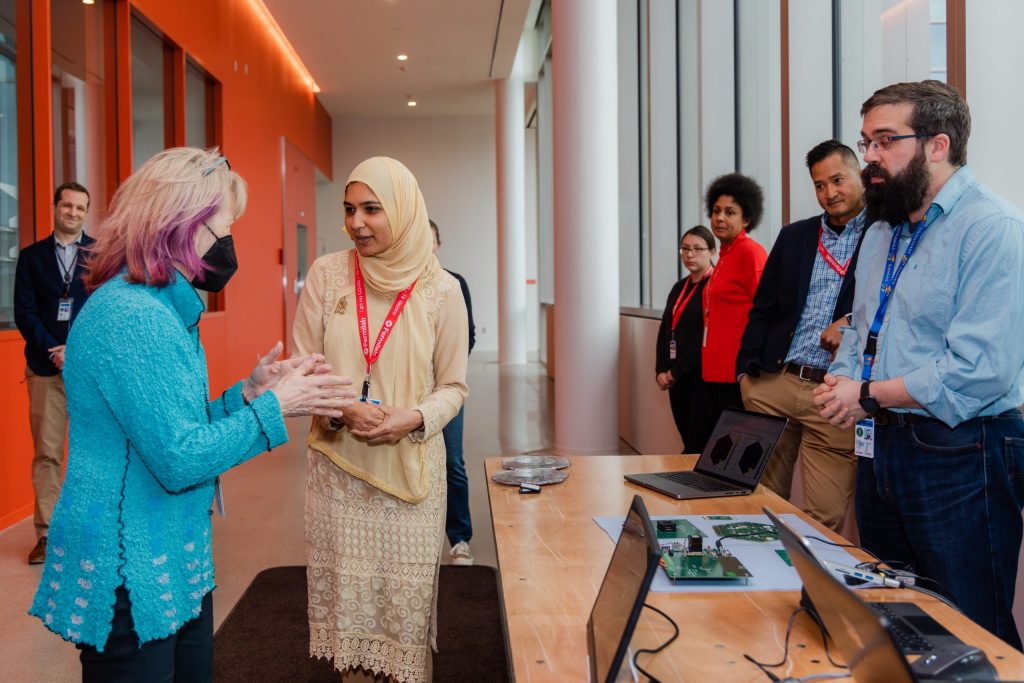
While at the new Integrated Engineering Research Center, Richmond meets Farah Fahim, division director, and gets an overview of Fermilab microelectronics and AI development. Photo: Tom Nichol, Fermilab
DOE leaders and local legislators also convened at the April event for the grand opening of the new PIP-II Cryogenic Plant Building. It will house a cryogenic plant to provide the PIP-II accelerator with liquid helium for particle acceleration. The event also celebrated the groundbreaking of the Linac Complex for the PIP-II accelerator, beginning the construction of the approximately 800,000-square-foot complex.
“I am impressed by the people I met today, and progress is evident with the lab’s work in quantum technologies, microelectronics, as well their STEM efforts,” Douraghy said at the conclusion of the visit.
Fermi National Accelerator Laboratory is supported by the Office of Science of the U.S. Department of Energy. The Office of Science is the single largest supporter of basic research in the physical sciences in the United States and is working to address some of the most pressing challenges of our time. For more information, please visit science.energy.gov.

